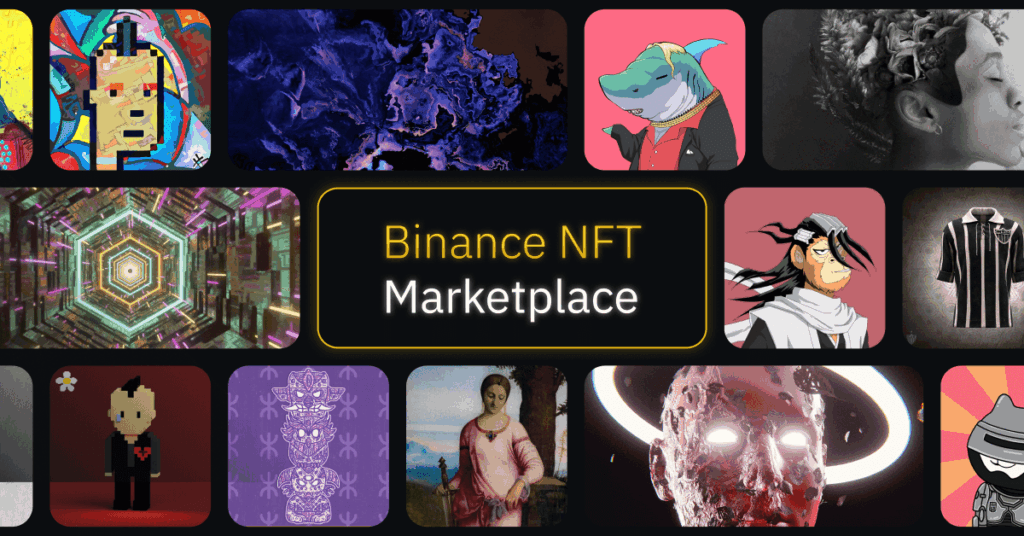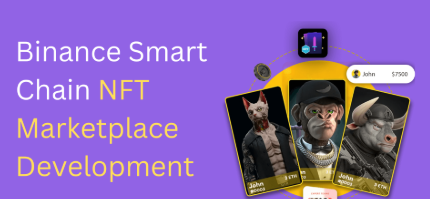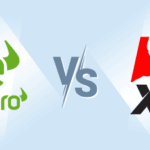In this article, I will cover the BSC NFT Marketplace Development, highlighting the speed, security, and affordable cost of trading platforms on the Binance Smart Chain.
You will discover its functions and advantages, the BSC technologies, and the development steps that make BSC one of the optimal options for scalable and convenient NFT marketplaces.
What is a BSC NFT Marketplace?
A BSC NFT Marketplace integrates the features of a BSC NFT exchange and a decentralized BSC nft marketplace. A decentralized BSC NFT marketplace enables users on the BSC network to create, buy, sell and trade NFTs in a decentralized, secure and efficient manner.
It serves as a central point for the tokenization of digital assets and the blockchain enabled exchange of assets. Digital assets include artwork, music, game artifacts, collectibles, virtual real estate and many more.

Unlike a BSC NFT marketplace, traditional online marketplaces do not incorporate automated smart contract systems into the marketplace, bypassing intermediaries for secure and transparent transactions. Due to the nature of BSC as a cryptocurrency, users and marketplace developers are more likely to prefer BSC to ethereum based NFT platforms, as BSC has lower gas fees and faster transaction speeds.
They are also more likely to prefer a BSC NFT marketplace to traditional online marketplaces. Typical marketplaces allow Users to manage their crypto wallets and integrate marketplace tools for listing NFTs, auctioning, minting and more.
Marketplace developers also build user experience enhancing digital features such as AI powered asset recommendations, automatic royalty payouts and cross chain integrations. A BSC NFT Marketplace digitizes ownership of assets and provides an ecosystem that is efficient, secure and cost efficient in trading NFTs on the BSC network.
BSC NFT Marketplace Development

Step-By-Step: BSC NFT Marketplace Development
Determine the Project Scope
- Determine the marketplace type: general NFTs, gaming assets, art, music, etc.
- Determine the essential functionalities: minting, listing, bidding, royalties, wallet integration, and admin panel.
Select the Technology Stack
- Frontend: Choose either React.js, Next.js, or Vue.js

- Backend: Choose either Node.js or Express.js
- Database: Choose either MongoDB or PostgreSQL
- Blockchain: Binance Smart Chain (BEP-721/BEP-1155 standards)
- Storage: IPFS or Pinata for decentralized media hosting
Integrate BSC
- Use Web3.js or Ethers.js to connect to the BSC testnet and mainnet.
- Integrate wallets using MetaMask or WalletConnect.
- Set up BSC RPC endpoints and configure gas parameters.
Create Smart Contracts
- Construct contracts for:
- NFT Minting (BEP-721 or BEP-1155)
- Marketplace Logic: listing, buying, selling, and bidding
- Royalties: ensure creators earn from secondary sales
- Use Remix IDE or Hardhat to test contracts.
- Use Truffle or Hardhat to deploy to BSC.
Construct the Frontend Interface
- Construct intuitive user interfaces for:
- Wallet connections
- NFT creation and uploading
- Accessing and filtering the marketplace
- Purchase and bidding processes
Utilize IPFS for Media Storage
- Use IPFS or Pinata for NFT metadata and media file storage.
- Incorporate IPFS hashes during minting to smart contracts.
Implement Backend Services
- Manage user profiles, transaction history, and analytics.
- Retrieve NFT data from BSC and IPFS, and correlate it with your API.
- Secure endpoints using JWT or OAuth.
Implement Payment and Gas Options
- Accept payments in BNB and stablecoins.
- Manage transaction speeds, optimize for gas fee.
- Relayers and transaction batching are strong options.
Perform Intensive Testing
- Use the BSC testnet for all aspects of testing.
- Create test cases for minting, buying, selling, bidding, and all desired simulators.
- Audit smart contracts and code extensively for security loopholes.
Launch and Keep an Eye on Performance
- Release to BSC mainnet.
- Ensure all analytics and error tracking features are operational.
- Use social media and strong SEO strategies to promote your marketplace and influencers.
Why Choose Binance Smart Chain for NFT Development
Low Transaction Fees
Considerably cheaper than Ethereum and other blockchains, minting, buying, and selling NFTs on BSC becomes quite affordable. Lower transaction costs mean greater participation from developers and users alike and more transactions.
High-Speed Transactions
With block time of approximately 3 seconds, BSC confirms transactions in seconds. Their rapid transaction processing greatly improves user experiences, particularly during auctions and other time-sensitive transactions.
EVM Compatibility
Binance Smart Chain is fully Ethereum Virtual Machine (EVM) compatible, which means developers migrating to BSC do not need to significantly alter code of Ethereum-based smart contracts, tools, and DApps.
Strong Ecosystem and Liquidity
BSC’s ecosystem is currently the most developed and is growing the fastest because of the Binance Exchange, DeFi protocols, and GameFi projects. This ecosystem improves liquidity and exposure on NFTs, and optimizes creator and trader experiences.
Cross-Chain Compatibility
BSC has interoperability options with Binance Chain, Ethereum, and other blockchains. This allows users to move across networks with their assets and NFTs, increasing the reach of the marketplace.
Robust Security and Stability
BSC enjoys strong network security due to Binace’s infrastructure and performs reliably under audits. Hence, people can safely trade NFTs on the blockchain.
Developer-Friendly Tools and Community Support
BSC’s extensive developer resources and community support allow BSC-ecosystem NFT developers to build, test and deploy their NFT projects more rapidly and efficiently.
Scalability and Performance
BSC was created with scalability in mind. It is capable of processing a high volume of transactions and maintaining constant and seamless operation of the NFT marketplace.
Growing User Base
Binance ecosystem users number in the millions which translates to extraordinary visibility for BSC and access to a large, crypto-savvy audience for new NFT projects.
Cost-Effective and Business Friendly
BSC is cost-effective and appropriately secure and performing. This is a promising offering for enterprises and startups aiming to create scalable NFT marketplaces due to their reduced operational costs.
Cost Factors of BSC NFT Marketplace Development
Type and Complexity of Marketplace
The estimation of cost is influenced essentially by the type of marketplace you are developing, whether it is an open marketplace like OpenSea or a niche platform (art, gaming, or music). If the marketplace requires complex features like auctions, royalties, or cross-chain support, it will cost you more time and money.
UI/UX Design Quality
The cost will go up as well for a more polished, dynamic, and user-friendly interface. For more design hours and front-end development time, the design will need more customization like custom patterns, dynamic interface design, and animated transitions or interactive control panels.
Smart Contract Development and Audit
Developing and implementing BEP-721 or BEP-1155 smart contracts on BSC is an important phase of the marketplace. If contracts contain extra features like royalties, bidding, or escrow, those will cost more to develop too. Plus, security audits can also add considerable cost to the budget.
Features and Functionality
The overall cost is influenced by the incorporation of complex functionalities like multi-wallet integration, auction systems, KYC verification, AI recommendations, and multi-language support. These involve independent coding, testing, and integration.
Backend and Database Infrastructure
Cost increases from creating a secure and scalable backend system (for user data, transaction history, and NFT indexing) alongside cloud hosting, API management, and real-time data processing.
Blockchain Integration and Testing
To uphold smooth integration and transaction processing with the Binance Smart Chain network, as well as wallet connection, is a labor-intensive activity. It also requires attention to detail in testnet and mainnet deployments, in turn impacting overall costs.
Third-Party API Integrations
Additions such as payment gateways, analytics tools, and IPFS storage systems (Pinata, Filecoin) integration may incur subscription or pay-as-you-go costs, further increasing the overall expenditure of the project.
Security and Compliance Measures
Engaging in multi-layer security, anti-fraud, and encryption tools, in addition to KYC/AML processes, will require devoted personnel and may also encompass additional technology costs.
Team Expertise and Location
Cost is influenced based on the region and the development team’s skill level. Blockchain developer hires from North America or Europe are more expensive than hiring from Asia or Eastern Europe.
Maintenance and Post-Launch Support
Ongoing expenses after deployment include technical support, server administration, feature updates, and bug fixes. Adding long-term stability requires continuous monitoring and improvement, which contributes to long-term expenses.
Estimated Cost Range
- Basic BSC NFT Marketplace (MVP): 20,000–20,000–40,000
- Medium-Scale Marketplace: 40,000–40,000–80,000
- Advanced Marketplace with Custom Features: $100,000+
Benefits of Developing on BSC
Low Transaction Fees
Compared to Ethereum and other blockchains, BSC has relatively low gas fees, meaning users can mint, buy, and sell NFTs without incurring high costs. This attracts users and creators to the platform.
Fast Transaction Speed
BSC ensures transaction confirmations within 3 seconds and boasts speed high enough users can mint, bid, and trade NFTs without a lag.
EVM Compatibility
BSC brings full Ethereum Virtual Machine (EVM) compatibility to the table meaning developers can migrate smart contracts and other Ethereum based tools and resources to BSC without large alterations to the underlying code.
Scalability and Performance
BSC has one of the highest transaction throughputs, meaning it can withstand large user loads, thousands of NFT listings, and on-chain transactions seamlessly without running the risk of network congestion.
Robust Security Infrastructure
BSC network got built under the Binance ecosystem which means it has strong security, regular financial audits, and secure consensus mechanisms which ensures user trust for NFT transactions.
Technologies Used in BSC NFT Development
Binance Smart Chain (BSC)
Primary blockchain platform for developing and running NFT smart contracts. It utilizes BEP-721 and BEP-1155 token standards to support the creation of unique and semi-fungible NFTs.
Solidity
The main smart contract programming language to write and launch contracts in the Binance Smart Chain. It specifies the logic for the NFTs and handles transactions and royalties along with marketplace features.
Web3.js / Ethers.js
These JavaScript libraries interface the front-end application to the blockchain. They enable users to engage smart contracts, execute transactions with their wallets, and retrieve on-chain data.
IPFS (InterPlanetary File System)
A decentralized system to store NFT metadata and digital assets (images, audio, videos) in a secure and immutable manner to prevent unauthorized alterations.
Frontend Frameworks (React, Angular, or Vue.js)
The latest front-end technologies employed to deliver responsive, fast, and intuitive layouts for the NFT marketplace. They allow users to browse, mint, and trade NFTs seamlessly.
Node.js and Express.js
These are responsible for setting up the backend server. They author and manage the APIs to streamline user authentication and to facilitate data synced transfers. They manage the communication between the blockchain and the respective databases.
Core Features of a Successful BSC NFT Marketplace
User-Friendly Interface
A simple, attractive, and friendly design helps users navigate seamlessly during the minting, buying, and selling of their NFTs which helps build trust and a seamless unsers experience.
Secure Wallet Integration
Users can connect and securely store their NFTs and tokens using MetaMask, Trust Wallet, and WalletConnect.
NFT Minting Functionality
Enabling users to upload their digital assets, ad metadata, and tokenize their work directly on the site allows creators to mint new NFTs using BEP-721 or BEP-1155 token standards.
Listing and Auction System
Creators and buyers can control the pricing and the duration of the sale with the option to list NFTs at a fixed price or auction them.
Smart Contract Integration
Minting, listing, bidding, and transactions are automated and flowing seamless which eliminates the need for third parties.
Royalties and Creator Rewards
By supporting automatic royalty payments every time their NFT is resold, creators are encouraged continuous loyalty and earnings.
Advanced Search and Filters
Search tools and category filters (by artist, price, collection, or popularity) assist users in finding their preferred NFTs effortlessly.
Pros & Cons
| Pros | Cons |
|---|---|
| Low Transaction Fees: BSC offers minimal gas costs, making NFT trading affordable for users and developers. | Centralization Concerns: Binance Smart Chain is more centralized compared to other blockchains like Ethereum. |
| High-Speed Transactions: Faster block times ensure quick minting, buying, and selling of NFTs. | Limited Decentralized Ecosystem: BSC has fewer truly decentralized apps compared to Ethereum. |
| EVM Compatibility: Developers can easily port existing Ethereum projects to BSC without rewriting code. | Network Congestion Risks: Sudden spikes in activity may cause temporary slowdowns. |
| Scalability: Capable of handling large transaction volumes efficiently, ideal for NFT marketplaces. | Less Brand Prestige: Ethereum still dominates NFT markets, which may affect visibility. |
| Strong Community & Binance Support: Access to Binance’s vast ecosystem and user base. | Security Reliance on Binance: Security partly depends on Binance’s infrastructure and validators. |
| Cross-Chain Interoperability: Supports asset movement between multiple blockchains. | Limited NFT Standards: Primarily supports BEP-721 and BEP-1155, fewer options than Ethereum’s ecosystem. |
Conclusion
In conclusion, developing a marketplace for BSC NFTs offers powerful, cost-effective, scalable opportunities for developing advanced digital asset platforms. Incorporating the Binance Smart Chain’s low costs, speed, and security enables the creation of seamless NFT ecosystems that serve all creators, collectors, and investors.
Features such as smart contract automation and cross-chain compatibility, along with other tools that facilitate wallet integration, demonstrate that BSC proudly represents the best NFT marketplace development option available in our rapidly evolving blockchain environment.
FAQ
How does BSC ensure security for NFT transactions?
BSC uses Proof-of-Staked-Authority (PoSA) consensus, smart contract audits, and cryptographic security measures to ensure safe, transparent, and tamper-proof transactions.
How long does it take to build a BSC NFT marketplace?
Development time varies depending on complexity — typically 8 to 16 weeks for a standard marketplace and longer for advanced or customized versions.
Which token standards are used in BSC NFT marketplaces?
BSC supports BEP-721 (for unique NFTs) and BEP-1155 (for batch or semi-fungible tokens), similar to Ethereum’s ERC-721 and ERC-1155 standards.
What features should a BSC NFT marketplace include?
Essential features include NFT minting, wallet integration, auction and fixed-price sales, royalties, analytics dashboard, security mechanisms, and cross-chain compatibility for broader user reach.
How much does it cost to develop a BSC NFT marketplace?
The cost depends on features, design, and complexity. Typically, a basic marketplace may cost $20,000–$40,000, while a feature-rich platform with advanced functionality can go up to $100,000 or more.








